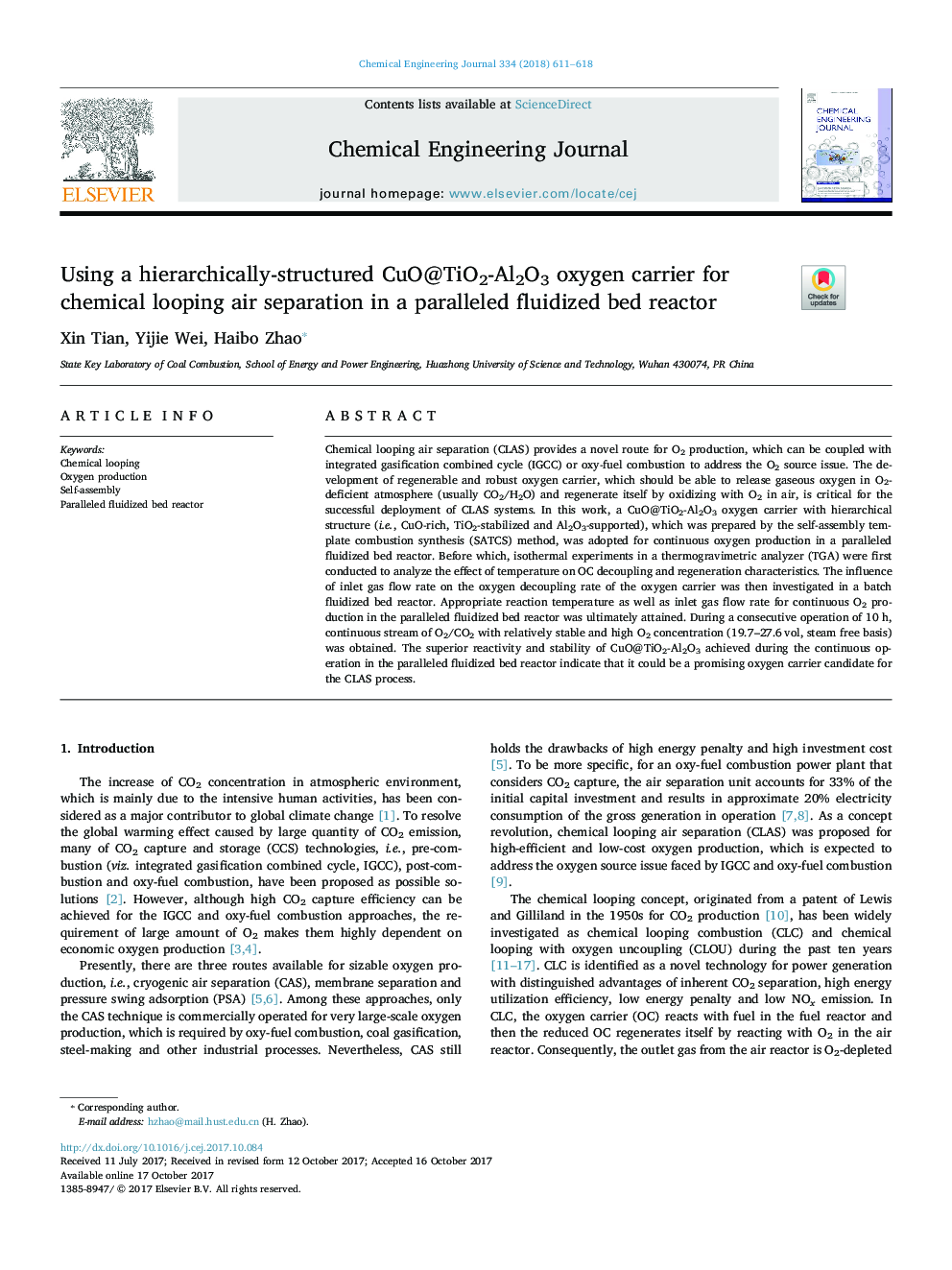| Article ID | Journal | Published Year | Pages | File Type |
|---|---|---|---|---|
| 6581049 | Chemical Engineering Journal | 2018 | 8 Pages |
Abstract
Chemical looping air separation (CLAS) provides a novel route for O2 production, which can be coupled with integrated gasification combined cycle (IGCC) or oxy-fuel combustion to address the O2 source issue. The development of regenerable and robust oxygen carrier, which should be able to release gaseous oxygen in O2-deficient atmosphere (usually CO2/H2O) and regenerate itself by oxidizing with O2 in air, is critical for the successful deployment of CLAS systems. In this work, a CuO@TiO2-Al2O3 oxygen carrier with hierarchical structure (i.e., CuO-rich, TiO2-stabilized and Al2O3-supported), which was prepared by the self-assembly template combustion synthesis (SATCS) method, was adopted for continuous oxygen production in a paralleled fluidized bed reactor. Before which, isothermal experiments in a thermogravimetric analyzer (TGA) were first conducted to analyze the effect of temperature on OC decoupling and regeneration characteristics. The influence of inlet gas flow rate on the oxygen decoupling rate of the oxygen carrier was then investigated in a batch fluidized bed reactor. Appropriate reaction temperature as well as inlet gas flow rate for continuous O2 production in the paralleled fluidized bed reactor was ultimately attained. During a consecutive operation of 10 h, continuous stream of O2/CO2 with relatively stable and high O2 concentration (19.7-27.6â¯vol, steam free basis) was obtained. The superior reactivity and stability of CuO@TiO2-Al2O3 achieved during the continuous operation in the paralleled fluidized bed reactor indicate that it could be a promising oxygen carrier candidate for the CLAS process.
Related Topics
Physical Sciences and Engineering
Chemical Engineering
Chemical Engineering (General)
Authors
Xin Tian, Yijie Wei, Haibo Zhao,
